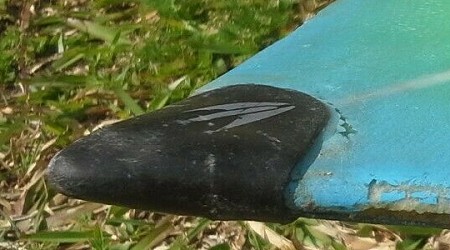 |
surfresearch.com.au
glossary
: n
|
| home | catalogue | history | references | appendix |
|
|
|
|
|
|
|
|
|
|
|
|
|
|
|
|
|
|
|
|
|
|
|
|
|
|
|
|
| No-Nose
circa 1978 Pig type template (large -ve wide point, wide tail) developed principally by Geoff McCoy in the 1980’s as the Lazer Zap (Image right).as a single fin response to MR'sTwin Fin #2's small wave performance. . ISimon Anderson then used the combination of this template and three similar fins for his development of the Thruster in 1979. Subsequent application to sailboard design in the 1990’s In the 1990’s McvCoy developed a Thruster finned model, The Nugget. |
 |
| Nose guard
A moulded rubber tip to protect both board and rider from damage, circa 1984 with popularity of no-nose and Thruster designs. Credited to Eric Arakawa and David Skedeleski at Island Classic Surfboards, Hawaii. Nose Guard, 1998 Albert Fox Surfboards. |
 |


|
|
|
|
|
|
|
|
|
|
|
|
|
|
|
|
|
|
|
|
|
|
|
|
|
|
|
| home | catalogue | history | references | appendix |